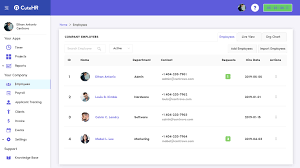Urgent Care EMR: Top Features, Benefits & Best Software for Fast-Paced Clinics

Running an urgent care clinic means balancing high patient volume, rapid visits, and stringent documentation standards. That’s why selecting the right Urgent Care EMR is essential. Whether you’re a startup clinic or an established multi-site provider, the correct EMR drives efficiency, streamlines care delivery, and safeguards your financial well‑being.
1. An In‑Depth Look: What Makes Urgent Care EMR Unique
An Urgent Care EMR is more than just a digital record-keeping tool. It’s designed specifically for episodic care workflows, combining clinical, operational, and financial functions into one unified platform:
-
Pre-built urgent care templates for quick charting
-
Automated workflow steps—from check-in to check-out
-
Integrated billing and claims processing tailored to episodic visits
-
Patient portals equipped for secure messaging and online check-in
-
Real‑time clinical alerts, lab interfaces, and e‑prescribing tools
Generic EMRs are often burdensome in fast-paced settings. But by choosing a purpose-built Urgent Care EMR, you support your clinicians and administrators, reduce overhead, and deliver consistent patient experience.
2. The Critical Value of Moving to an Urgent Care EMR
Using the right EMR transforms day-to-day operations:
-
Speed: Documentation that once took 10 minutes per patient can drop to under two minutes
-
Billing accuracy: Fewer rejected claims due to built-in coding checks
-
Compliance support: Automated ICD-10, CPT, and HIPAA compliance workflows
-
Patient engagement: Automated reminders, online intake forms, telehealth integration
-
Financial visibility: Built-in analytics dashboards for revenue cycle management and clinic KPIs
Clinics that adopt mature Urgent Care EMR platforms typically see a measurable uptick in efficiency and patient satisfaction within weeks.
3. Essential Features Checklist
When evaluating vendors, prioritize systems that include:
-
Pre‑configured urgent care workflows, including quick charting stages
-
Automated clinical prompts—for immunization due dates, allergy alerts, or preventive screenings
-
Telehealth integration for virtual care visits
-
Integrated diagnostic interfaces for labs, imaging, and e‑prescriptions
-
Revenue module with eligibility checks and claims scrubbing
-
Patient access tools, such as mobile apps or text-based forms
-
Reporting and analytics for tracking trends like wait times, denial rates, and top-performing providers
These features provide a robust foundation for high-efficiency operations.
4. Leading URGENT CARE EMR Platforms to Consider
Experity EMR/PM
A market-leading system optimized specifically for urgent care operations. Includes rapid documentation, high-volume throughput design, and complete revenue cycle support. Many clinics using this system reduce A/R days and improve billing accuracy within months.
Calysta EMR
Cloud-based and highly customizable. Calysta includes mobile support, easy template configuration, and deep integration with lab systems and patient access tools.
DocVilla Cloud EMR
Has earned attention for its complete cloud deployment, rapid setup timelines, integrated telehealth, and patient portal features—all tailored to urgent care clinics.
AdvancedMD
Although not solely focused on urgent care, it’s popular for its scheduling flexibility, billing features, and integration capabilities. Best suited to clinics with multi-specialty needs or expanded outpatient services.
5. Manager Insights: Real Practice Example
Case Study: Fast‑Track Med Clinic
Fast‑Track Med Clinic, a multi-site urgent care provider, switched to a purpose-built Urgent Care EMR and experienced:
-
A 30% reduction in average charting time
-
A 50% decrease in billing denials
-
Patient wait times cut from 25 minutes to under 10
-
A measurable increase in patient satisfaction survey scores
Clinic leadership reported the system paid for itself within six months due to improved cash flow and better billing outcomes.
6. Implementation Best Practices
Your EMR choice is only half the battle—success depends on implementation:
-
Pilot one location or provider before full rollout
-
Conduct staff training including mock visits, billing scenarios, and troubleshooting
-
Monitor metrics post‑go‑live: wait time, denial rate, A/R days, and provider efficiency
-
Use real-time feedback from staff; make template changes and workflow adjustments early
-
Partner with an EMR vendor offering ongoing support and training
This approach smooths the transition and increases EMR adoption among clinicians and front desk staff alike.
7. Overcoming Common Challenges
Even well-designed Urgent Care EMR systems can run into obstacles:
-
User resistance due to stressful initial adoption or perceived complexity
-
Data migration errors such as missing patients or chart duplicates
-
Integration issues if existing labs, imaging centers, or billing partners aren’t compatible
-
Inadequate training leading to underutilization of features
To counter these, choose products offering strong onboarding support, free interface trials, and user training sessions tailored to urgent care workflows.
8. Financial & Operational Advantages
Choosing a purpose-built urgent care record system provides tangible business benefits:
-
Lower administrative overhead from faster registration and checkout
-
More complete claims and faster reimbursements
-
Access to analytics for performance, staff productivity, and financial health
-
Improved patient retention with portal access and communication capabilities
-
Better tracking of regulatory compliance and audit readiness
These financial returns usually clear the path for continued investment in technology and growth.
9. Looking Ahead: The Future of Urgent Care EMR
Emerging trends in urgent care EMR include:
-
AI-enabled clinical decision support for triage triage, lab order optimization, and diagnosis suggestions
-
Voice-powered charting using speech-to-text features to speed up documentation
-
Telehealth embedded workflows allowing smooth transitions between in-person and virtual visits
-
Interoperability with public health reporting, regional HIEs, and telemonitoring devices
-
Modular add-ons—such as imaging apps, behavioral health modules, or remote patient monitoring—which plug directly into the EMR base
These capabilities will shape next-gen urgent care workflows and clinic scalability.
Conclusion: Choose Excellence with Urgent Care EMR
Upgrading to a clinically tailored Urgent Care EMR is transformative. By selecting systems like Experity, Calysta, or DocVilla, clinics can streamline workflows, increase throughput, reduce denials, and improve patient outcomes.
Focus on vendor support, customization capability, and built-for-purpose design. With proper training and performance tracking, your urgent care operation can achieve higher efficiency, financial stability, and patient satisfaction.




